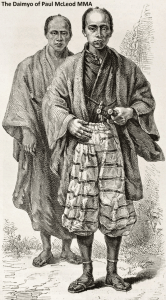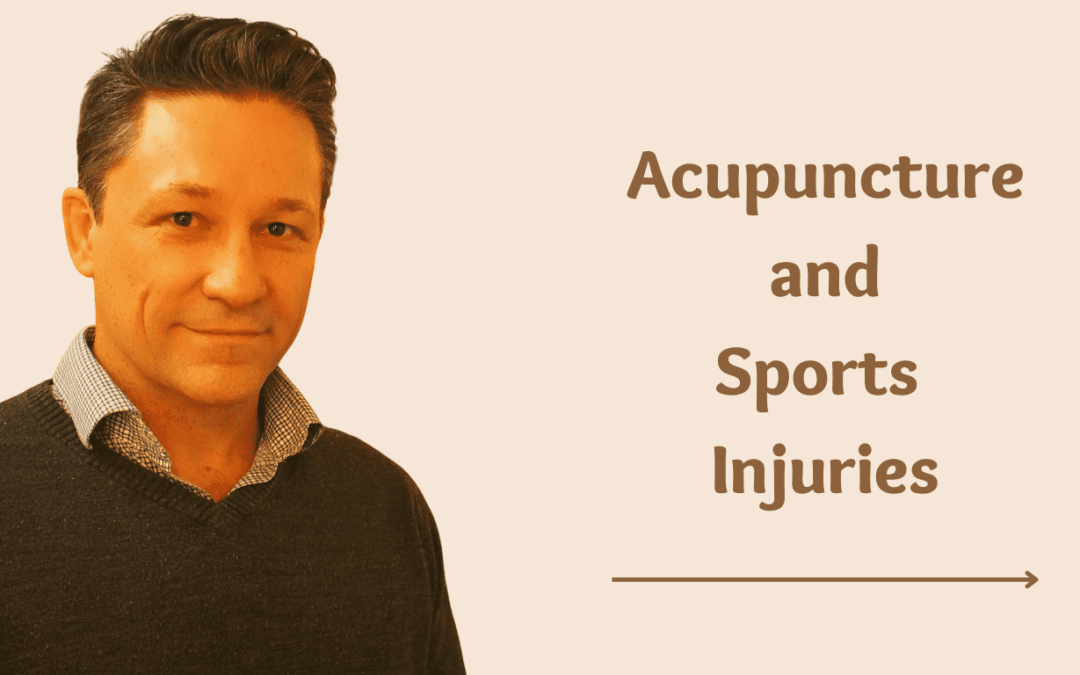 Acupuncture and sports injuries go hand in hand. Whether you are a professional fighter, like the Daimyo of Paul McLeod AAC (to the right of screen), or just a weekend warrior, chances are that you sometimes push your body to the extreme in an attempt to become a stronger, faster and more agile athlete. In the sporting world this is expected of all those who strive to be at the top of their game. Unfortunately, pushing for personal bests whilst in training or during competition can lead to injury. If these injuries are not managed in a timely manor, they can become obstacles to optimum performance in the short & long term. Thankfully, the traditional practices of acupuncture and sports injury management techniques of other branches of traditional Chinese medicine provide options for the management of pain, swelling and dysfunction associated with sports injuries.
Acupuncture and sports injuries go hand in hand. Whether you are a professional fighter, like the Daimyo of Paul McLeod AAC (to the right of screen), or just a weekend warrior, chances are that you sometimes push your body to the extreme in an attempt to become a stronger, faster and more agile athlete. In the sporting world this is expected of all those who strive to be at the top of their game. Unfortunately, pushing for personal bests whilst in training or during competition can lead to injury. If these injuries are not managed in a timely manor, they can become obstacles to optimum performance in the short & long term. Thankfully, the traditional practices of acupuncture and sports injury management techniques of other branches of traditional Chinese medicine provide options for the management of pain, swelling and dysfunction associated with sports injuries.
Pain meds are a short term solution
Today’s hectic lifestyle doesn’t often leave much time for proper rest and rehabilitation. The professional is always looking to reach ‘beyond’ and is usually under the pump with upcoming deadlines, while the likes of the busy executive, contract builder or performance artist are usually so busy that rehabbing an injury is often low on the list of priorities. Consequently, the quick fix offered by pain medication is an attractive option when dealing with pain and inflammation. And lets face it, sometimes pain and anti-inflammatory meds are marvelous. Unfortunately, they usually only represent a short term or temporary fix.
Don’t get me wrong, pain is not much fun and nobody should have to live with it. As a clinician, I am so pleased to be working in a time when people have access to effective pain medication. My concern regarding the use of pain meds is that while they dull the pain of injury, they also tend to dull the message that pain is trying to send to the body; that something is wrong, that a weakness has develop and that some modification to activity is required. In the short term, pain meds may enable you to return to your sport or to your life and perform at a reasonable level. The problem is that the untimely return to activity is likely to exacerbate the underlying injury and ultimately lead to delayed recovery or even permanent dysfunction.
Acupuncture has a long association with pain management
Acupuncture is very old, possibly many thousands of years old. Exactly when it began and what it was used for is not known. What we can say with certainty is that, according to the extent record, acupuncture was a well established system of health care by at least the 3rd century BC. I suspect that over much of its history, acupuncture has been used to help manage people’s pain. Certainly acupuncture and other types of Chinese medicine have a long associated with the Shaolin monks of that famous martial arts temple on Mount Song in China’s Henan province. Old as acupuncture is, however, many people in the West don’t know how it can help them manage their pain and return to optimum performance.
So how does Acupuncture help with the pain?
According to the theory of traditional Chinese medicine the health of the body is maintained by the balanced circulation of three vital substances in the body, namely Blood, Fluids and Qi. When one or more of these substances become deficient, excessive or stuck in situ, they lead to disharmony and to what Chinese medicine practitioners recognise as the signs and symptoms of disease.
One of the most common manifestations of a disharmony in the circulation of Blood, Fluids & Qi is pain. Interestingly, each of the vital substances produce there own signature pain type (burning, stabbing, dull, aching etc). By systematically working through the traditional Chinese medicine diagnostic process (which involves the careful observation of the client through listening, questioning, palpation and specific tests) the acupuncturist is able to determine which substance is involved with the painful condition. From here a Chinese medicine diagnosis is formed and a treatment principle developed. Once all this is done, an acupuncture/Chinese medicine manage can be put in place to help manage the pain.
An example from my clinical practice
Lets look at the athlete with a medically diagnosed grade two sprain of the anterior-lateral ankle that once presented in my clinic for treatment. It was a fresh injury with moderate redness, heat and swelling in the local area. Range of movement was limited and walking produced moderate to intense pain, rated at 8 out of 10. Based on these signs and symptoms, my TCM diagnosed was Local Qi and Blood stagnation of the Stomach, Gall Bladder and Kidney channels of the left ankle due to trauma. My treatment principle was to relieve pain and increase ROM by cooling heat, reducing swelling and resolving local QI and Blood stagnation. My treatment method included acupuncture and moxibustion locally and at special effect points located some distance from the injury. I am pleased to note that there were no incidence of re-injury during recovery, and rehabilitation and return to participation was quick. If you are interested, you can read more about this case in a articled called ‘Treatment of a Grade Two Sprain of the Anterior Talofibular Ligament with Acupuncture and Moxibustion’ in Australian Journal of Acupuncture and Chinese Medicine 2007;2(2):25–29.
Thanks for reading,
Paul
MPET; B. A. (Hons); B. H. Sc. (Acu); Ad. Dip. App. Sc. (Acu);
Dip. Rem. Mass.; Dip. Rem. Therap;
Member AACMA 1332; Registered Acupuncturist (AHPRA)
Paul McLeod is a AHPRA registered acupuncturist in Geelong, Victoria, offering drug-free management for a wide variety of conditions. Paul has been studying and practicing acupuncture and Chinese medicine since 1995 and has a wealth of experience with many forms of pain, including muscular-skeletal pain, nerve pain, digestive pain and gynaecological pain. Paul is a very experienced teacher with a passion for sharing his knowledge of Chinese medicine with the community.
 Acupuncture and sports injuries go hand in hand. Whether you are a professional fighter, like the Daimyo of Paul McLeod AAC (to the right of screen), or just a weekend warrior, chances are that you sometimes push your body to the extreme in an attempt to become a stronger, faster and more agile athlete. In the sporting world this is expected of all those who strive to be at the top of their game. Unfortunately, pushing for personal bests whilst in training or during competition can lead to injury. If these injuries are not managed in a timely manor, they can become obstacles to optimum performance in the short & long term. Thankfully, the traditional practices of acupuncture and sports injury management techniques of other branches of traditional Chinese medicine provide options for the management of pain, swelling and dysfunction associated with sports injuries.
Acupuncture and sports injuries go hand in hand. Whether you are a professional fighter, like the Daimyo of Paul McLeod AAC (to the right of screen), or just a weekend warrior, chances are that you sometimes push your body to the extreme in an attempt to become a stronger, faster and more agile athlete. In the sporting world this is expected of all those who strive to be at the top of their game. Unfortunately, pushing for personal bests whilst in training or during competition can lead to injury. If these injuries are not managed in a timely manor, they can become obstacles to optimum performance in the short & long term. Thankfully, the traditional practices of acupuncture and sports injury management techniques of other branches of traditional Chinese medicine provide options for the management of pain, swelling and dysfunction associated with sports injuries.
